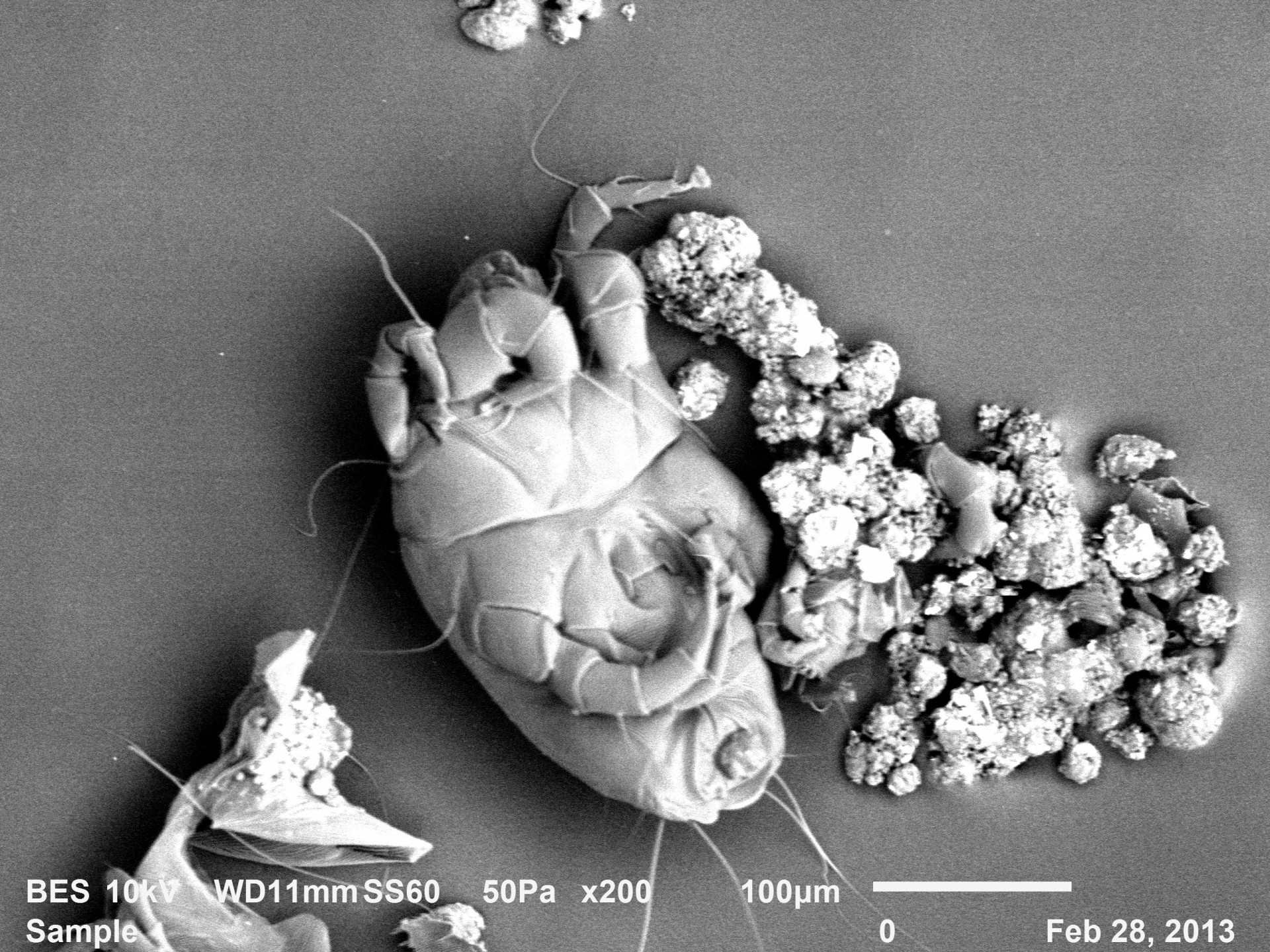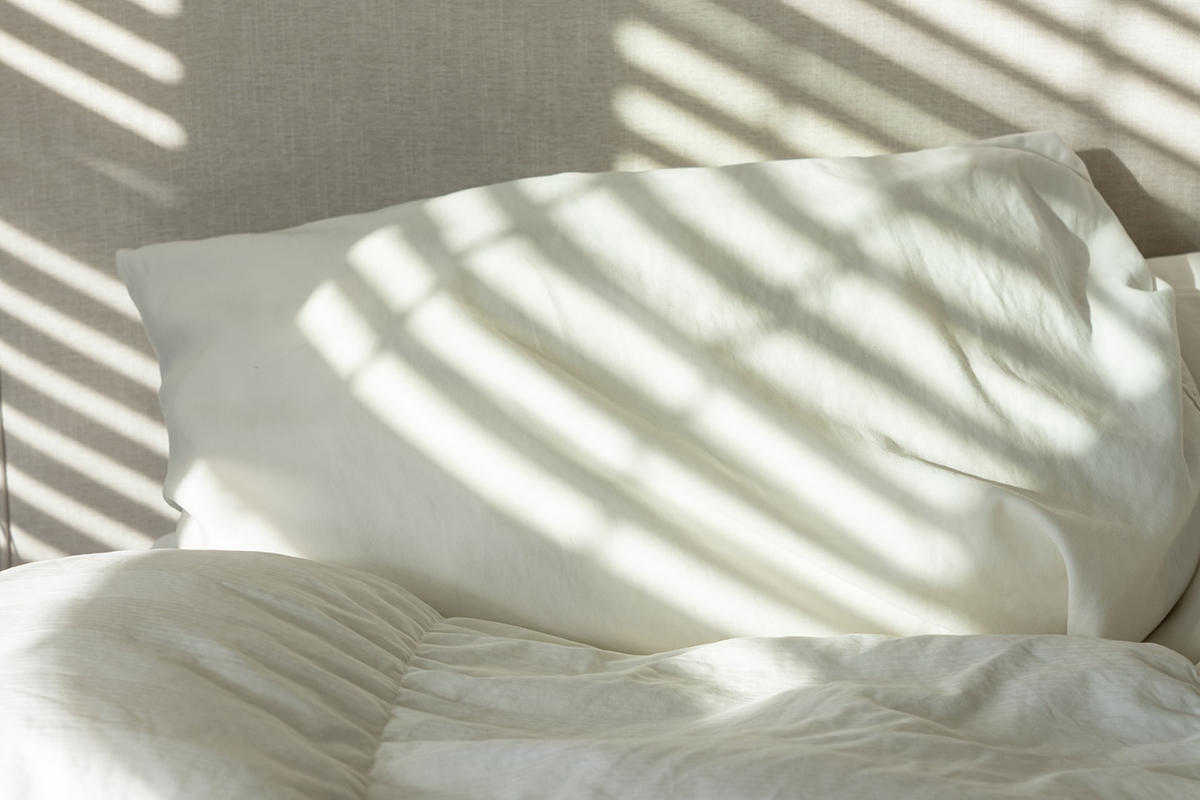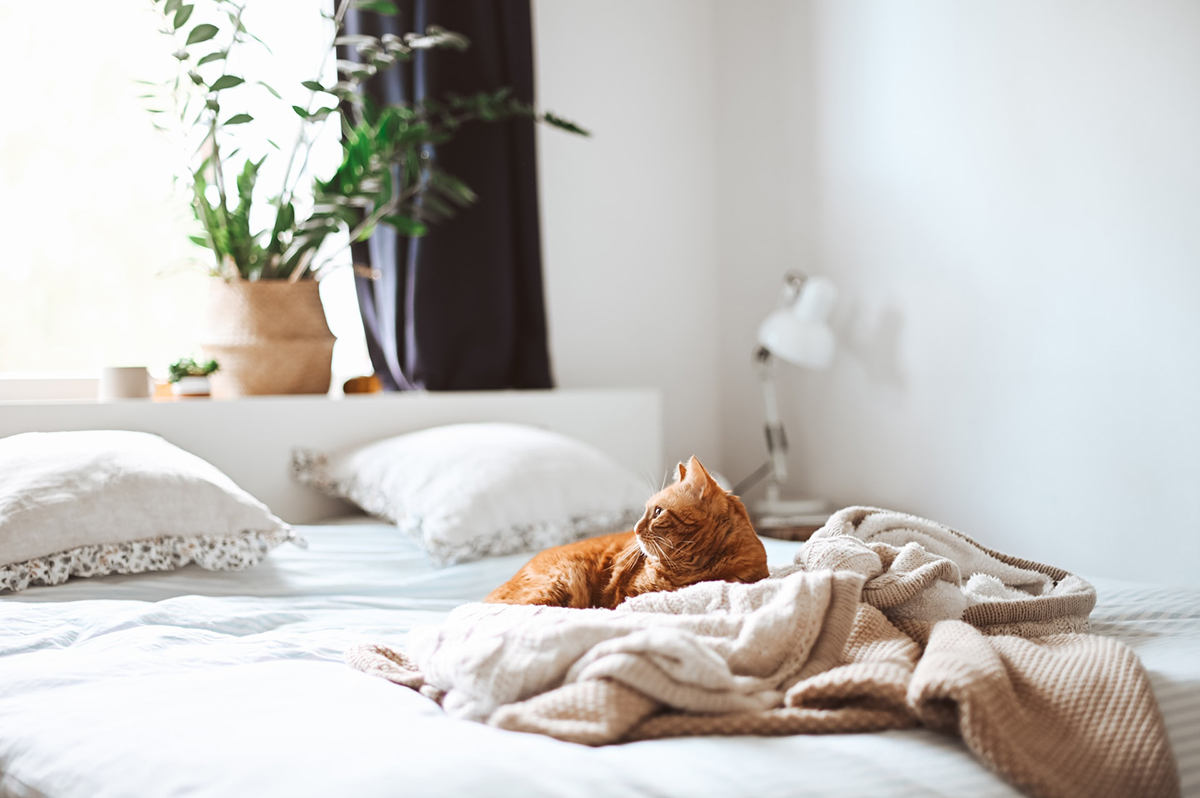Did you know that dust mites can be one of the most common causes of allergies and asthma attacks in your own home? These nifty little things tend to accumulate in the warm, damp and dark spaces that we spend a lot of time in, making mattresses ideal places for dust mites to thrive, particularly if we don’t clean them regularly.
We spoke to Dennis Matthews, Research Scientist in Microbiology at Dyson, to find out more. Read to the end for a step-by-step guide to thoroughly cleaning your mattress!
How and where dust mites accumulate

Image courtesy of Dyson
Dennis Matthews: Wherever you spend the most time and shed the most skin, that’s where you’re most likely to find dust mites. And we spend a third of our lives in our beds. So while it might look clean, our mattress could be a hotbed of microscopic life. It is also common to find more mites in the bedding of people with dry skin, as their discarded skin cells have reduced lipid content, making them dust mites’ favourite meal.
For a tropical climate like in Singapore, it’s useful to note that house dust mites thrive in warm, damp and dark conditions, particularly where humidity levels are around 70% and temperatures rise above 25°C. That means that areas—like our mattresses—where we sweat, breathe and share our body heat are perfect homes for mites.
How to get rid of dust mites

Image courtesy of Liz Vo/Unsplash
1 Starve your dust mites
Reducing the amount of skin cell debris minimises the primary food source of dust mites, inhibiting them from reproducing exponentially. Vacuum your mattress on both sides with a machine with an advanced filtration system, as well as your sofa and other upholstery.
2 Manage humidity levels
Dust mites hydrate themselves by absorbing water from the air, so keeping relative humidity levels below 45% at room temperature will kill most of them off. Air out bedding and blankets frequently and ventilate your home by opening the window or using a HEPA-filtered air purifier. Don’t forget to use the extractor fan after showering or while cooking too, as even raising the humidity levels for an hour and a half a day enables dust mites to survive.
3 Control the temperature
Dust mites thrive at temperatures of 25°C, so vacuum warmer areas like pet baskets, sofas or mattresses frequently. Washing bedding or other soft furnishings at 60–90°C will break up allergens too.
How to clean your mattress in four easy steps

Image courtesy of Gaelle Marcel/Unsplash
1 Remove and wash bedding
Washing sheets and blankets on a 60°C or 90°C wash will help to break down and reduce allergens. While you may vacuum your mattress only a few times a year, it’s recommended that you launder and change your bedding once a week.
2 Vacuum gently, but with power
Dust mites have claws that help them cling onto mattress fibres, making them difficult to remove. Using a vacuum with a high-power or Boost mode will deliver the suction you need to remove as many allergens as possible. Use a Mini-Motorised tool in handheld mode that won’t damage the surface of your mattress but has stiff nylon bristles that can agitate the fibres in your mattress and loosen dust mites and other debris. Make sure that the vacuum you’re using has a fully sealed filtration system to avoid allergens being expelled back into your face as you clean!
3 Focus on hard-to-reach areas
Pay attention to mattress folds and seams where allergens can gather. To clean these areas, use a Crevice tool in handheld mode. Don’t forget under your bed as well, as dust mites thrive in dark, warm and humid areas with plenty of skin flakes that often remain undisturbed.
4 Flip, repeat, remake
Flip your mattress over and vacuum the other side to keep concentrations of invisible allergens low. If you’ve cleaned any stains, ensure that these have dried out fully before remaking the bed—humidity will encourage mould, bacteria and potentially dust mite proliferation. You may want to consider using a mattress protector, which will absorb excess sweat and dust flakes and can be easily washed.
This post was adapted from an article originally published in the May 2021 issue of SquareRooms.



